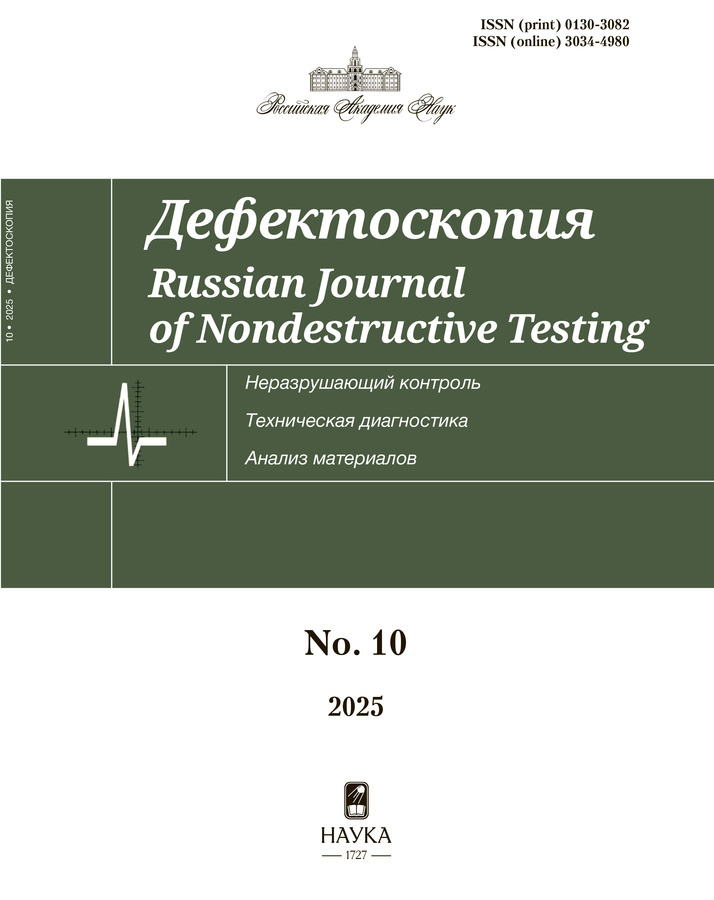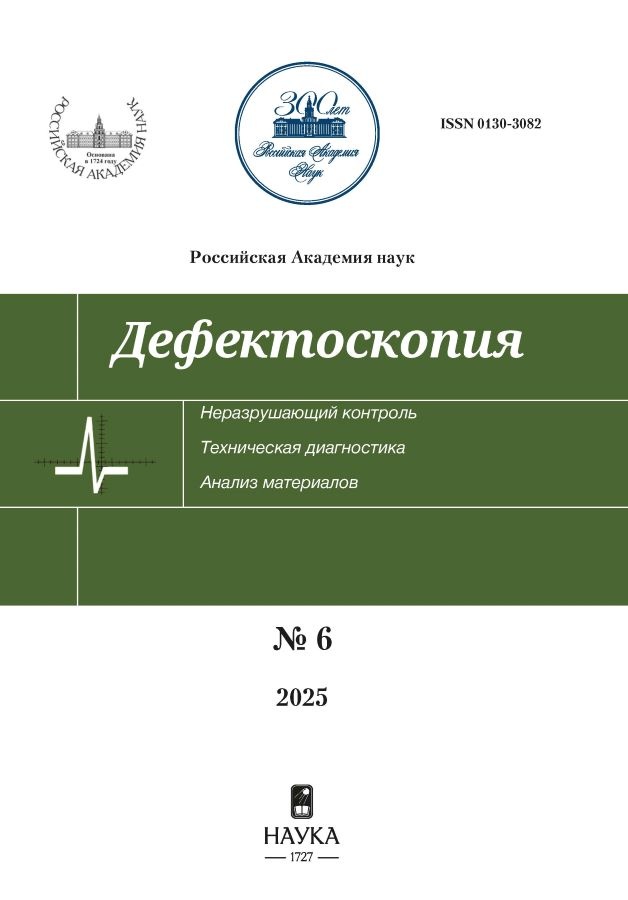Modeling and experimental study of thermal equivalents of impact damage in composites during the development of reference samples in thermal control
- Authors: Vavilov V.P.1, Chulkov A.O.1, Ganina O.A.1
-
Affiliations:
- Tomsk Polytechnic University
- Issue: No 6 (2025)
- Pages: 50-57
- Section: Thermal methods
- URL: https://rjpbr.com/0130-3082/article/view/686475
- DOI: https://doi.org/10.31857/S0130308225060059
- ID: 686475
Cite item
Abstract
The concept of “thermal equivalents” of impact damage in composites, created by iteratively fitting the parameters of flat bottom hole defects, has been elaborated. In thin-walled composites, impact damage tends to be located near the surface opposite to the impact, so thermal inspection on the rear surface of the product is most effective for their detection. Detection of defects on the front surface is associated with small signal amplitudes in the region of temperature indications and requires the use of the thermal equivalent of impact damage in the form of a combination of flat bottom hole defects. On the rear surface, temperature indications of impact damage are often butterfly-shaped and characterized by a large area of defect “footprints”. Single flat-bottom flaws can serve as thermal equivalents of such defects. The proposed concept of thermal equivalents of real defects in composites is verified experimentally on a carbon fiber-reinforced plastic specimen with impact damage of the 62 J energy.
Keywords
Full Text
About the authors
V. P. Vavilov
Tomsk Polytechnic University
Author for correspondence.
Email: chulkovao@tpu.ru
Russian Federation, 634050 Tomsk, Lenin Av., 30
A. O. Chulkov
Tomsk Polytechnic University
Email: vavilov@tpu.ru
Russian Federation, 634050 Tomsk, Lenin Av., 30
O. A. Ganina
Tomsk Polytechnic University
Email: vsoa@tpu.ru
Russian Federation, 634050 Tomsk, Lenin Av., 30
References
- Analysis of the Russian market of composite materials: results in 2023 and forecast up to 2027. [Electronic resource]. URL: https://marketing.rbc.ru/articles/14856/ (access data: ).
- Composites share 40% in airplane that is a record for medium-range aircraft. [Electronic resource]. URL: https://rostec.ru/media/news/ms-21-300-s-krylom-iz-rossiyskikh-kompozitov-vypolnil-pervyy-polet/#start (access data: ).
- Gholizadeh S. A review of nondestructive testing methods of composite materials / Procedia Structural Integrity. 2016. Article 050-57. 57 p.
- Umar M.Z., Ahmad I., Vavilov V., Świderski W., Hamzah Ab.R., Wan Abdullah W.S. Developing methodology of pulsed thermal NDT of materials: Step-by-step analysis of reference samples // NDT.net — The e-Journal of Nondestructive Testing 2008. www.ndt.net/search/docs.php3?MainSource=25
- Ptaszek G., Cawley P., Almond D., Pickering S. Artificial disbonds for calibration of transient thermography inspection of thermal barrier coating systems // NDT & E Intern. 2012. V. 45. P. 71–78. https://doi.org/10.1016/j.ndteint.2011.09.008
- Simonov D.A., Moskovchenko A.I. Portable device for thermal nondestructive testing of hidden corrosion in metallic shells by using a LED heat source / E3S Web of Conferences. Corrosion in the Oil & Gas Industry. 2019. P. 12101014. https://doi.org/10.1051/e3sconf/201912101014
- Saeed N., Omar M.A., Abdulrahman Y., Dalem S. IR thermographic analysis of 3D printed CFRP reference samples with back-drilled and embedded defects // J. Nondestr. Eval. 2018. V. 37. P. 59. https://doi.org/10.1007/s10921-018-0512-2
- Vavilov V.P., Burleigh D.D., Demin V.G. Advanced modeling of thermal NDT problems: from buried landmines to defects in composites / Proc. SPIE “Thermosense XXIV” 2002. V. 4710. P. 507—521.
- Vavilov V.P., Burleigh D.D., Chulkov A.O., Kladov D.Yu. Simulated delamionations in thermal NDT standards and concept of thermally equivalent defects // NDT & E International. April 2025. V. 151. Article #103278.
- Vavilov V.P., Billard S., Ayvazyan V.M. A thermal tomographic unit for testing composite materials // Defectoskopiya. 2014. No. 11. P. 71—75. EDN: TEKQMD.
Supplementary files


















